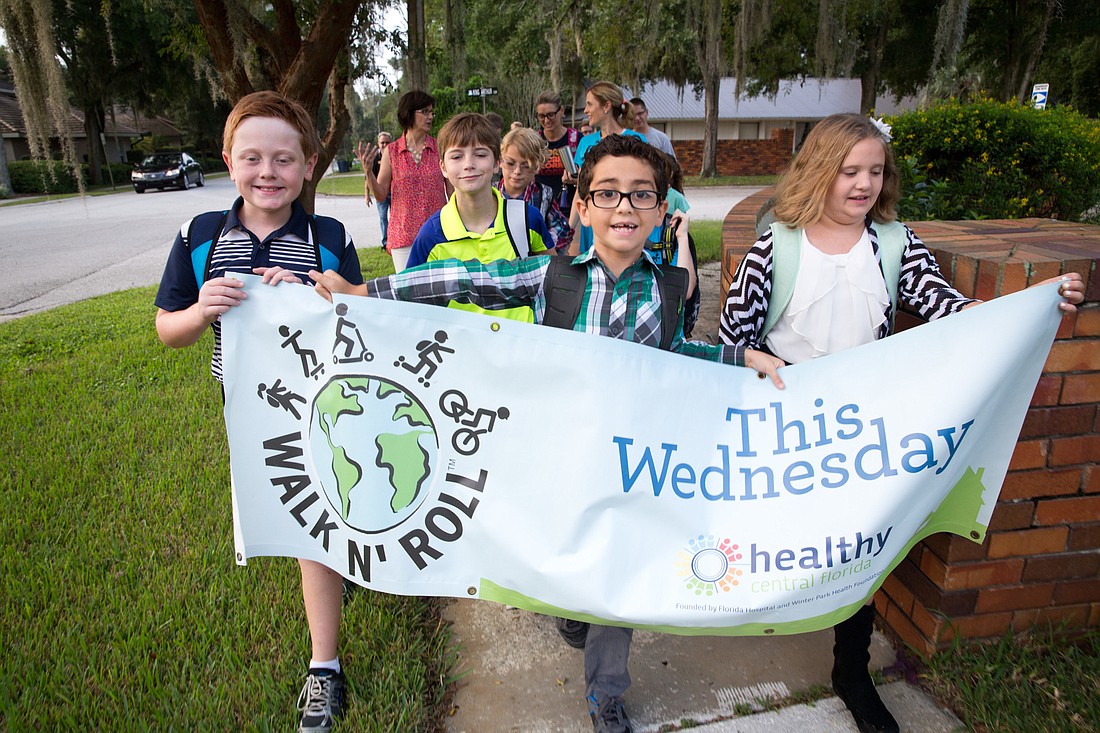- April 19, 2024
-
-
Loading

Loading

Instead of taking the bus or being dropped off by their parents, some students opted for a healthier option.
On May 10, more than 2,000 students from 10 local schools walked and biked to school as they participated in Healthy Central Florida’s Walk ’n’ Roll Program to celebrate National Bike to School Day — a health initiative to encourage physical activity for kids.
The 2,008 children participating in Winter Park, Maitland and Eatonville broke a participation record that had stayed just under the 2,000 mark since the program’s start five years ago. The last event in October featured 1,832 participants.
Finally hitting HCF’s participation goal came as a welcome sign of progress for Executive Director Jill Hamilton Buss.
“We had been inching up on the average, like five percent per year,” Buss said. “But we were always shy of 2,000, so it was just that ceiling we just couldn’t seem to get over.”
When HCF was created in 2012 as a partnership between the Winter Park Health Foundation and Florida Hospital, Buss found her inspiration for Walk ’n’ Roll down the road in Maitland. Three local moms in Maitland had developed a walk/bike initiative at Dommerich Elementary, where their children attended.
“So I start with a blank piece of paper, the organization didn’t exist, and I was looking around for best practices, and I knew that I wanted walking and biking to be one of the cornerstones of whatever we did,” Hamilton Buss said. “We had to get people moving — the obesity crisis and diabetes, and people are much too sedentary, including children.”
In the last 50 years, the number of students walking or biking to school has fallen significantly. According to a report by researcher Byoung-Suk Kweon at the University of Michigan, in 1969, almost 50% of students walked or biked to school. By 2009, that number sat at just 13%.
The biggest factors for such a big drop-off are the convenience and safety issues related to America’s car culture, Buss said.
“The suburbs have risen up, and communities have had their lanes widened,” Buss said. “Streets are busy, and parents are frankly afraid that their kids are going to be run over. So fewer and fewer are walking and biking to school, and many of them are in back seats, and car lines are ridiculously long, and the whole culture has changed.”
Every fall, HCF hosts a workshop that features a panel of traffic engineers, principals, advocates and local law-enforcement officials who discuss current problems and potential solutions.
Solving the biggest problem — keeping kids safe while promoting walking and biking to school — has proven difficult for HCF. The organization’s main effort has been to concentrate on changing the infrastructure, including roads, walkways and traffic safety.
This year, as part of receiving HCF grant money, each school was required to conduct what Buss calls a “walking audit.” A group comprising school officials, transportation officials, traffic engineers and others evaluated the conditions surrounding the school and made suggestions for improvements.
“It was the right strategy,” Buss said. “In some cases, on the spot, we made changes.”
Buss and others discovered a popular spot where parents were dropping children off that had no safe crosswalk. As soon as the path was found, the organization, along with local authorities, quickly painted a safe walkway for students to use.
Although the organization hopes to see the participation grow, its main goal for the future is to better adapt the environment to accommodate walking and biking.
“What we are shifting to is really … on those built-environment metrics,” Buss said. “More crosswalks and more sidewalks, because that will result in more students, and more families, being able to walk — and more connectivity among schools, parks and neighborhoods.”
Contact Troy Herring at